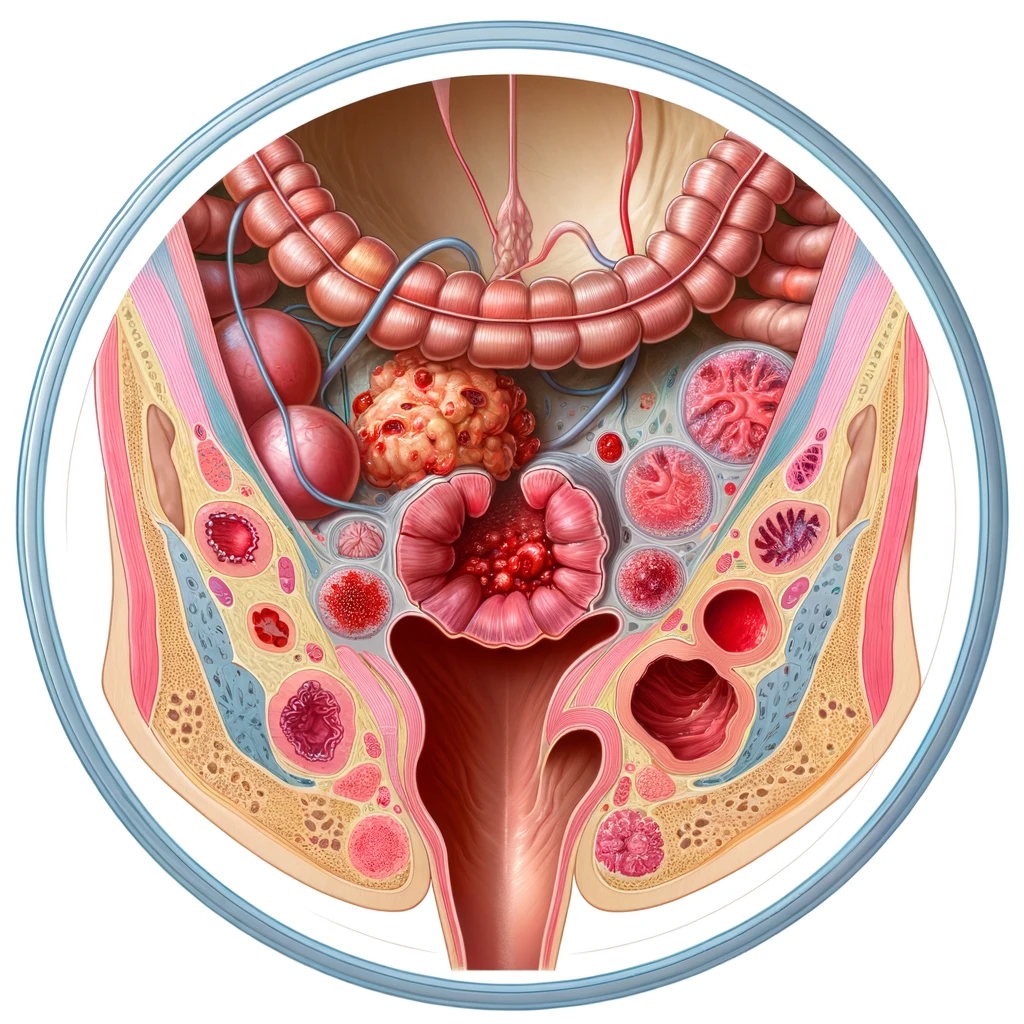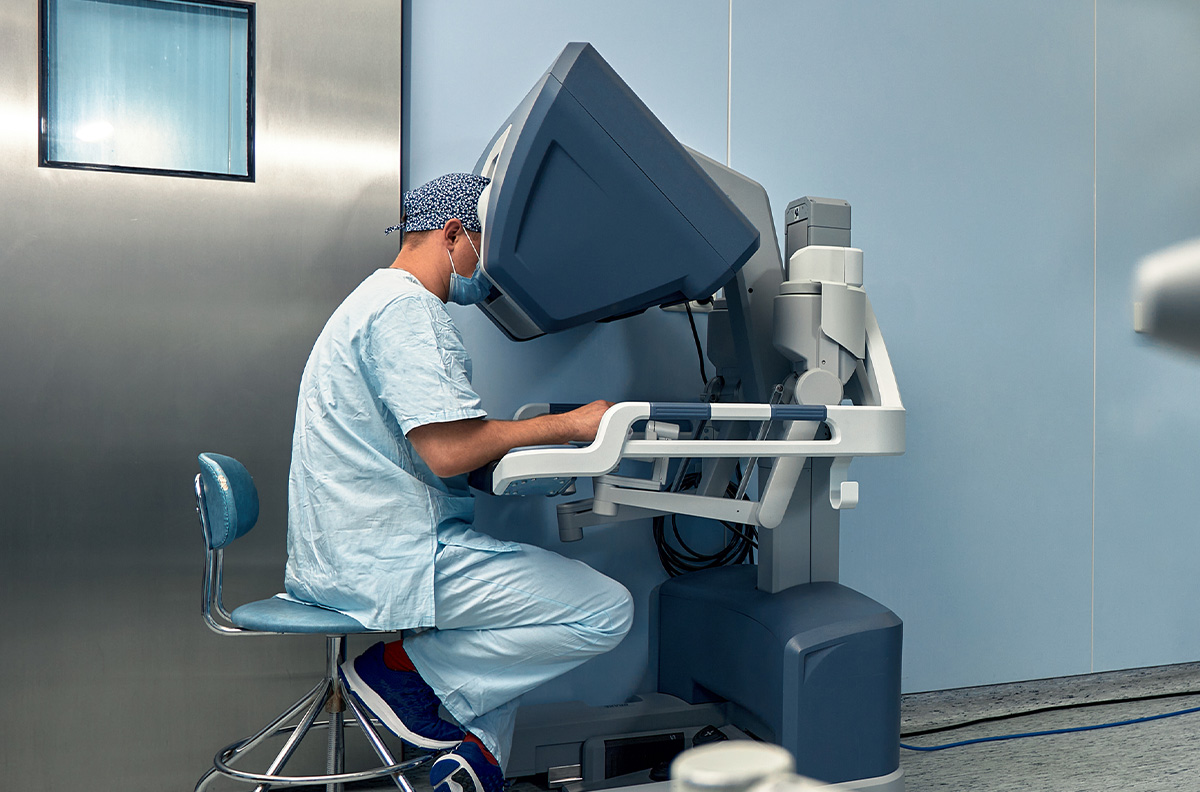Laparoscopic and Robotic Surgery
With laparoscopic and robotic surgery, your comfort during the operation is higher. These surgical techniques also promote faster recovery, allowing you to return to your daily life quickly.

Digestive System Diseases

General Surgery Emergencies

Hernia

Anal Region Diseases

Liver Diseases

Gallbladder and Bile Duct Diseases

Reflux Disease

Pancreas Diseases

Spleen Surgical Diseases

Upper and Lower GIS Endoscopy

Closed Method (Laparoscopy and Endoscopy)

Da Vinci Robot
Laparoscopic and Robotic Surgery: Enhancing Surgical Comfort
Laparoscopic and robotic surgery are techniques that play a significant role in making the surgical process more comfortable. These minimally invasive surgical techniques reduce hospital stay durations and promote faster patient recovery. There are certain differences between laparoscopic and robotic surgery. The physician and patient jointly decide which method to apply.
In traditional surgery, the incisions are larger, whereas in laparoscopic and robotic surgery, small incisions are made at various points. This reduces pain and allows incision wounds to heal more quickly. During laparoscopic and robotic operations, a camera projects the surgical site onto a screen, though the image clarity varies. Laparoscopic surgery is not suitable for patients with serious heart and lung conditions. Previous surgeries can also hinder the application of this surgical method.
How Is Laparoscopic Surgery Performed?
Laparoscopic surgery uses an instrument called a laparoscope, which is why the method is named as such. The laparoscope has a light at its tip. This fiber optic telescope enables the physician to perform interventions easily. The risk of complications in laparoscopic surgery is quite low. The scars heal quickly, preserving the aesthetic appearance. The use of medication is also reduced in this method.
Laparoscopic surgery can be used for various conditions, including:
- Investigation of abdominal pain
- Ovarian cysts, excessively painful menstrual periods
- Investigation of infertility causes
- Ectopic pregnancy, appendicitis
- Gallbladder and uterus removal operations
- Obesity surgery
- Partial or complete removal of internal organs
- Stomach diseases
How Is Robotic Surgery Performed?
Robotic surgery has been widely used in various operations in recent years. Small incisions are made in the patient’s body during the operation. The robot is controlled by the surgeon. The surgical area is monitored on a screen during the procedure. Compared to traditional surgical techniques, robotic surgery results in less pain.
Advantages of robotic surgery include:
- Aesthetic benefits
- Less bleeding compared to traditional methods
- Shorter hospital stays
The robotic system performs procedures with high precision. The robot’s arms do not experience tremors. High-resolution image quality provides a clear view of the surgical area. The slender structure of the robot’s arms allows easy access to even the most distant areas of organs and tissues. However, robotic surgery has some disadvantages. The lack of tactile sensation and high costs, along with the risk of malfunction, can be considered drawbacks. Nevertheless, these disadvantages can be mitigated with a professional surgeon and team.
Differences Between Robotic and Laparoscopic Surgery
There are distinct differences between robotic and laparoscopic surgical techniques. The first difference lies in the imaging system. Robotic systems provide a three-dimensional image. The image is stable, as it is provided by the robot without tremors. Instruments like scissors and needles are easily maneuvered using robotic arms. The robotic arms perform more intricate tasks than human hands. Laparoscopic surgery offers a two-dimensional image. Complex tasks are easier to perform in robotic surgery, while tasks like suturing are more challenging in laparoscopic surgery. Both robotic and laparoscopic surgeries are utilized in urology, gynecology, cardiovascular surgery, and general surgery.
Asst. Prof. Dr. Vahit Mutlu and his team successfully apply laparoscopic and robotic surgical techniques based on the type of operation. This allows patients to return to their daily lives quickly. For solutions to your health problems, feel free to contact us immediately.







